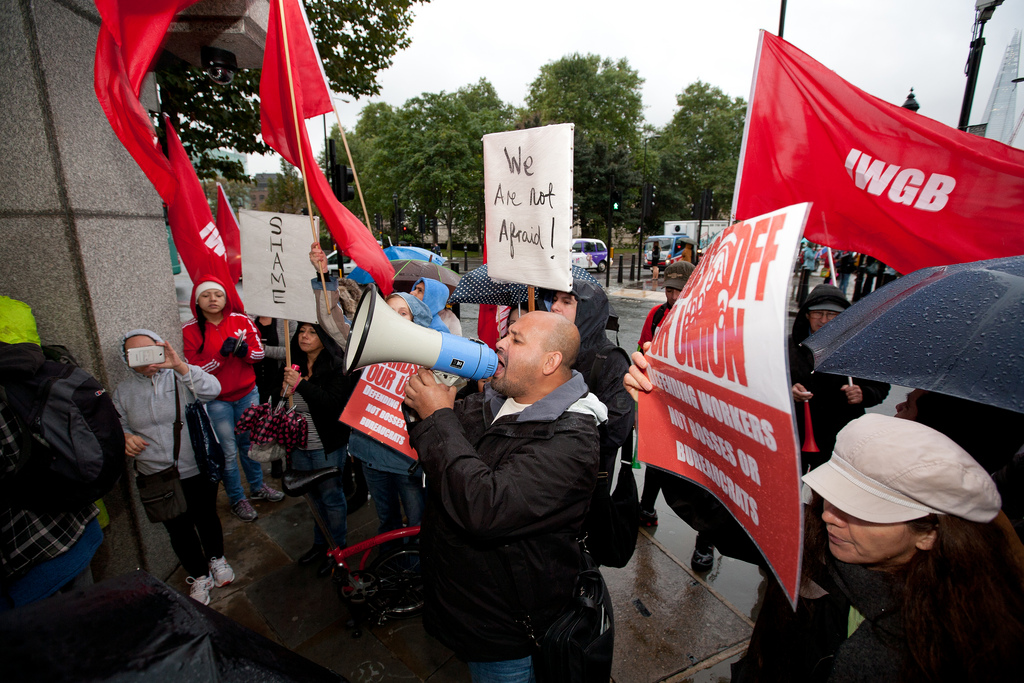“Protests Across US Call for End to Migrant Family Separations,” Contextualized By Pew Research Data
The article below describes the massive nation-wide protests in June of 2019 in response to the exposure of Trump’s increased family separation policy, when journalists revealed that thousands of children were not only incarcerated, subject to violence and sexual abuse, and taken away from their immigrant parents (often asking for asylum), but due to an indifferent and disorganized bureaucratic process “lost” to their true parents through the records. The famous videos about the separation policy sparked protests often organized by Latino community members. These protests, and the data from Pew, reinforce the research we’ve read in class that posits restrictive immigration policies stoke fear and/or anger in the Latino community, generating a backlash–where Latinos are more likely to vote Democrat and more likely to turn out to vote after such policies are enacted and become salient (Pantoja, Ramirez, and Seguar 2001, Bower, Nicholson and Segura 2006, Zepeda-Millan and Wallace 2014, Stokes-Brown 2006, Branton, Martinez-Ebers, Carey Jr and Matsubayashi 2010, White 2016, working research by Valenzuela 2019). As this research on past restrictive policies and elections predicts, 27% of Latinos voting in the 2018 midterms were voting for the first time, and the majority voted for Democratic candidates. The research by Pew also provides potential causal mechanisms by which these academic projects hold true–for example, why, as White shows, does the backlash occur among Latinos who are citizens and not in danger of being victim to the policy? 55% of the Latino community worries that someone they know could be deported.
This research and the articles on protest raise several important questions for this weeks’ reading:
- the PEW statistics demonstrate a significant gender gap in Latino voting, with a greater percentage of Latino women voting Democrat than Latino men. And despite the problems with exit-poll statistics, there is a percentage of Latinos still voting for Republicans–less than 29%, perhaps, as discussed in lecture, but certainly over 0%. What might account for the sections of the Latino community who do not “backlash” and divisions within the community, such as gender?
- Valenzuela’s working research assumes that white rage over restrictive policies won’t lead to increased mobilization. To what extent is this assumption true? How can we test it? And how do we understand non-Latino (including non-white) responses to restrictive policies, such as their participation in mass mobilization like the protests around family separation? How sustained was this engagement when the media stopped reporting on the issue?
More Latinos Have Serious Concerns About Their Place in America Under Trump
Key takeaways about Latino voters in the 2018 midterm elections
 Summary: This week we looked into the effects of sudden change in terms of racial demographics. Enos’ experiment in 2014 is a very interesting experiment in which he looks into intergroup contact and exclusionary attitudes. Basically, he finds that when a group is exposed to people in the “outgroup” they are more likely to have exclusionary feelings towards that group. However, as time goes on and this “outgroup” is assimilated in their lifestyle, their exclusionary attitudes become less extreme. This article is about the “ingroup” (White workers in the UK) fighting against the rise of the outgroup. Groups seem to blame other racial groups for their races struggles especially economically speaking. Although this article is about the UK and not the US, it still has the same principles that we see in the United States with hispanic immigrants.
Summary: This week we looked into the effects of sudden change in terms of racial demographics. Enos’ experiment in 2014 is a very interesting experiment in which he looks into intergroup contact and exclusionary attitudes. Basically, he finds that when a group is exposed to people in the “outgroup” they are more likely to have exclusionary feelings towards that group. However, as time goes on and this “outgroup” is assimilated in their lifestyle, their exclusionary attitudes become less extreme. This article is about the “ingroup” (White workers in the UK) fighting against the rise of the outgroup. Groups seem to blame other racial groups for their races struggles especially economically speaking. Although this article is about the UK and not the US, it still has the same principles that we see in the United States with hispanic immigrants.